Study on the Causes and Countermeasures of High Lightning Trip-Out Rate on Electric Transmission Lines
Abstract
1. Introduction
2. The Causes of High Lightning Trip-Out Rate
2.1. Sub-Standard Lightning Withstand Level
2.2. Lightning Complexity at a Mid-Point Between Towers
2.3. The Complexity of First and Subsequent Lightning Strike Conditions
3. Solution to the Problem of High Lightning Trip-Out Rate
3.1. Working Principle of Solid Phase Gas Arc Extinguishing Device
3.2. Experiment on the Capabilities of a Fast Quenching Power Frequency Continuous Current Arc
3.3. Modeling and Simulation Process for Protecting Against First and Subsequent Lightning Strokes
3.3.1. Mathematical Model of Power Frequency Continuous Current Arc
3.3.2. Simulation of Protection Against First and Subsequent Lightning Strokes
4. Case Analysis
5. Comparison of Solid-Phase Device with Other Lightning Protection Methods
5.1. Comparison with the Traditional Lightning Protection Measures
5.2. Comparison with Typical Lightning-Protection Devices in Other Countries
6. Conclusions
Author Contributions
Funding
Data Availability Statement
Conflicts of Interest
References
- Song, Y.; Wang, J.; Huang, P.; Lu, Y.; He, Q.; Jia, Z.; Wang, Y.W. Arc-Extinguishing Research on Semi-Closed Multi-Compression Tube Structures. Energies 2023, 16, 1057. [Google Scholar] [CrossRef]
- Wang, J.; Wang, Y.; Li, S.; Yan, R.; Wu, Y.; Wang, Y. Arc Extinguishing Lightning Protection Gap Device. European Union Patent 2903008, 18 February 2014. [Google Scholar]
- Wang, J.; Wang, Y.; Li, S.; Yan, R.; Wu, Y.; Wang, Y. The Gap Lightning Protection Device. Japan Patent 6018305, 17 December 2012. (In Japanese). [Google Scholar]
- Li, S.; Wang, J.; Wang, Y.; Wang, Y.; Wu, Y.; Yan, R. No-Freewheeling Arc Lightning Protection Gap Protecting Device. Australian Patent 201210371579.3, 27 September 2012. [Google Scholar]
- Yi, H.; Kai, L.; Tian, W.; Yan, L. Analysis of Influential Factors on Operation Safety of Transmission Line and Countermeasures. Gaodianya Jishu/High Volt. Eng. 2014, 40, 3494. (In Chinese) [Google Scholar]
- Armstrong, H.R.; Whitehead, E.R. Field and analytical studies of transmission line shielding. IEEE Trans. Power Appar. Syst. 1968, 87, 270–282. [Google Scholar] [CrossRef]
- Brown, G.W.; Whitehead, E.R. Field and analytical studies of transmission lines part II. IEEE Trans. Power Appar. Syst. 1969, 88, 617–626. [Google Scholar] [CrossRef]
- Rakov, V.A. Lightning Parameters for Engineering Applications; CIGRE: Paris, France, 2013. [Google Scholar]
- Pichler, H.; Diendorfer, G.; Mair, M. Statistcs of Lightning Current Parameters Measured at the Gaisberg Tower. In Proceedings of the 18th International Lightning Detective Conference (ILDC), Helsinki, Finland, 7–9 June 2004; p. 64. [Google Scholar]
- Heidler, F.; Zischank, W.; Flisowski, Z.; Bouquegneau, C. Parameters of Lightning Current Given in iec62306-Background, Experence and Outlook. In Proceedings of the 29th International Conference on Lightning Protection, Uppsala, Sweden, 23–26 June 2008. [Google Scholar]
- Diendorfer, G.; Mair, M.; Schulz, W.; Hadrian, W. Lightning Current Measurements in Austria-Experimental Setup and First Result. In Proceedings of the 25th International Conference on Lightning Protection (ICLP), Rhodos, Grecce, 18–22 September 2000. [Google Scholar]
- Schulz, W.; Vergeiner, C.; Pichler, H.; Cummins, K. Location Accuracy Evalution of the Austrian Lightning Location System Aldis. In Proceedings of the 22nd International Lightning Detection Conference, Broomfield, CO, USA, 2–7 September 2012. [Google Scholar]
- Wang, J.; Bi, J. Protective effect study of solid-phase arc-quenching device on superimposed lightning strike. Electr. Power Syst. Res. 2020, 182, 106195. [Google Scholar] [CrossRef]
- Zhang, L.; Wang, D.L.; Liu, Y.D.; Zhou, Z.; Lv, P.; Wang, Z.; Li, Y.; Liu, Y.; Shen, H.; Yang, G. Analysis on Protective Relaying and Its Operation Conditions in 220 kV and Above AC System of SGCC in Past Ten Years. Power Syst. Technol. 2017, 41, 1654–1659. (In Chinese) [Google Scholar]
- Rousseau, A.; Zang, X.; Tao, M. Multiple Shots on SPDs—Additional Tests. In Proceedings of the 2014 International Conference on Lightning Protection (ICLP), Shanghai, China, 11–18 October 2014. [Google Scholar]
- Trepanier, J.Y.; Reggio, M.; Camarero, R. LTE computation of axisymmetric arc-flow intersection in circuit breakers. IEEE Trans Plasma Sci. 1991, 19, 580–589. [Google Scholar] [CrossRef]
- Guardado, J.L.; Maximov, S.G.; Melgoza, E.; Naredo, J.L.; Moreno, P. An improved arc model before current zero based on the combined. Mayr and Cassie arc models. IEEE Trans Power Deliv. 2005, 20, 138–142. [Google Scholar] [CrossRef]
- Mayr, O. Beitrage zur theorie des statischen und des dynamischen lichtbogens. Arch. Elektrotech. 1943, 37, 588–608. [Google Scholar] [CrossRef]
- Wang, J.; Bi, J. Engineering Fluent Mechanics; Merle, C., Potter David, C., Wiggert Bassem, H., Eds.; Ramadan China Machine Press: Beijing, China, 2015; pp. 135–155. [Google Scholar]
- Kovitya, P. Ablation-Stabilized Arcs in Nylon and Boric Acid Tubes. IEEE Trans. Plasma Sci. 1987, 15, 294–301. [Google Scholar] [CrossRef]
- Kovitya, P.; Lowke, J.J. Theoretical prediction of ablation-stabilized arcs confined in cylindrical tubes. J. Phys. D Appl. Phys. 1984, 17, 1197–1212. [Google Scholar] [CrossRef]
- Zhukow, M.F.; Zasypkin, I.M. Thermal Plasma Torches: Design, Characteristics, Applications; Cambridge International Publishing Ltd.: Cambringe, UK, 2007; pp. 156–158. [Google Scholar]
- Wang, J.; Huang, Z.; Chen, Z.; Wang, Y. The Mechanism Study of Jet Stream Interrupter Gap Lightning Protection Device. In Proceedings of the Pacific International Symposium on Electromagnetic Compatibility, Beijing, China, 12–16 April 2010; pp. 1305–1308. [Google Scholar]
- Bi, J.; Wang, J.; Yan, S. Protective effect study of compressing arc extinguishing lightning protection device on superimposed lightning strikes. High Technol. Lett. 2021, 27, 440–447. [Google Scholar]
- Li, H.; Wang, J.; Huang, P.; Guo, K.; Wang, Y. Research on the effect of an air-blown interrupting gap to reduce the rate of lightning tripping. Energies 2023, 16, 1474. [Google Scholar] [CrossRef]



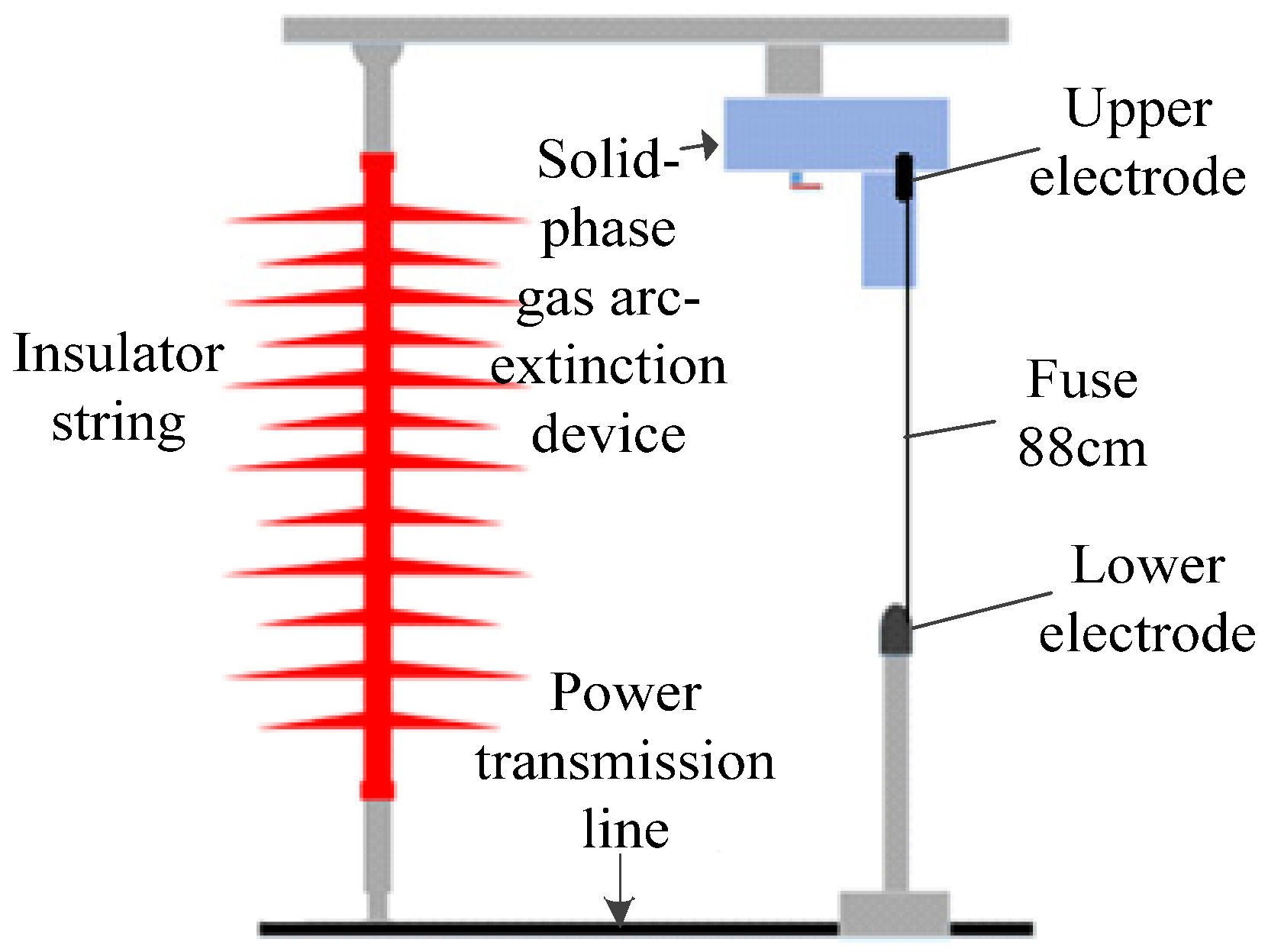
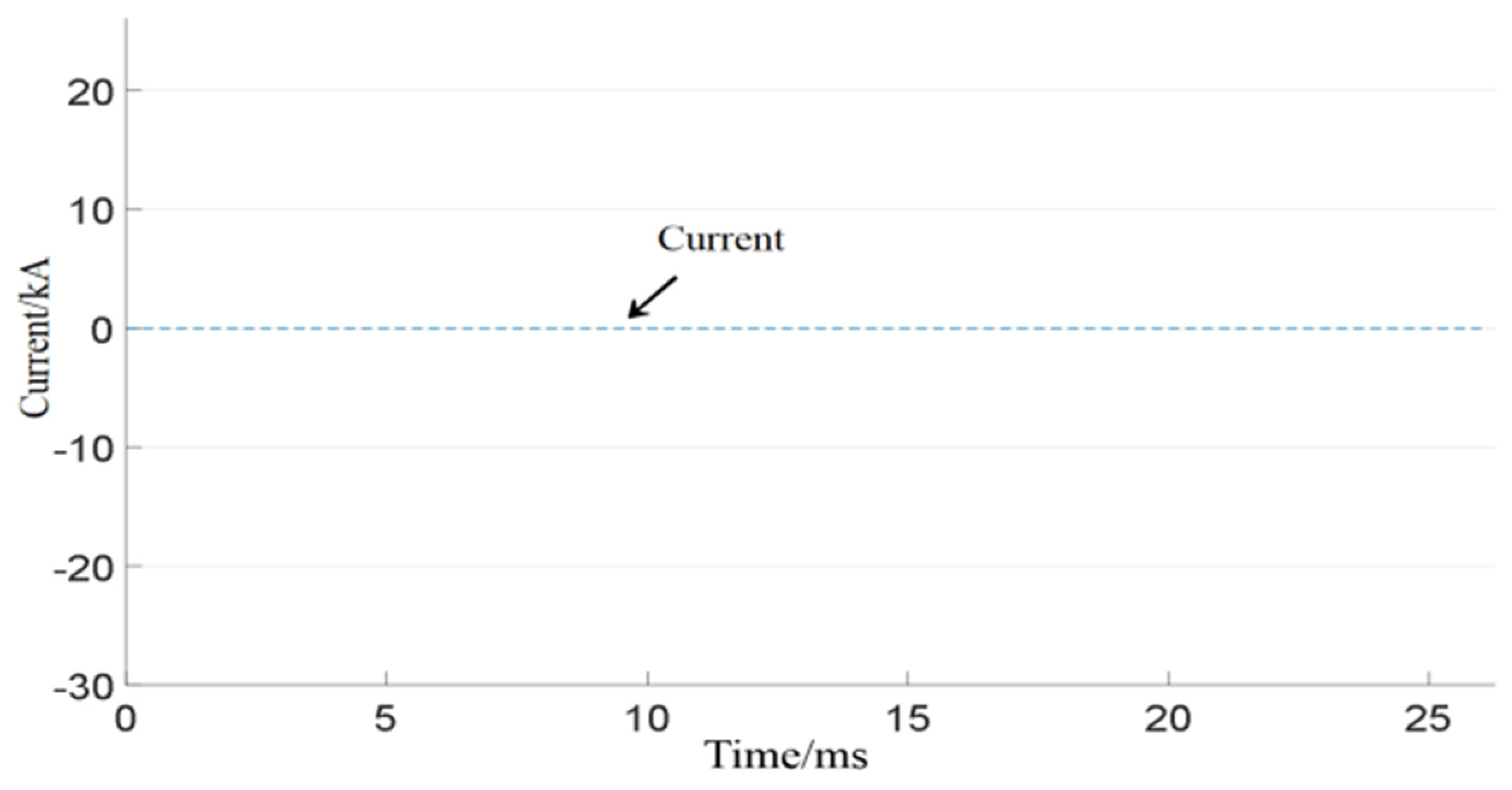
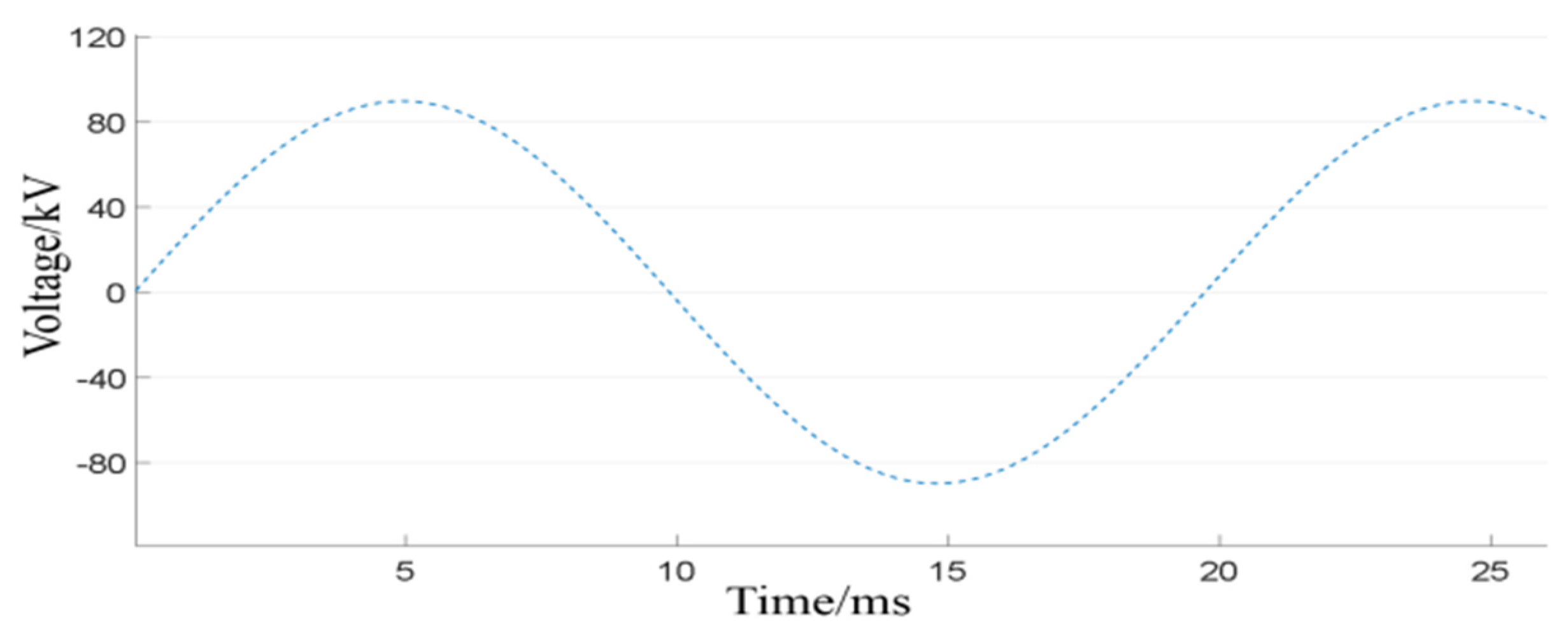



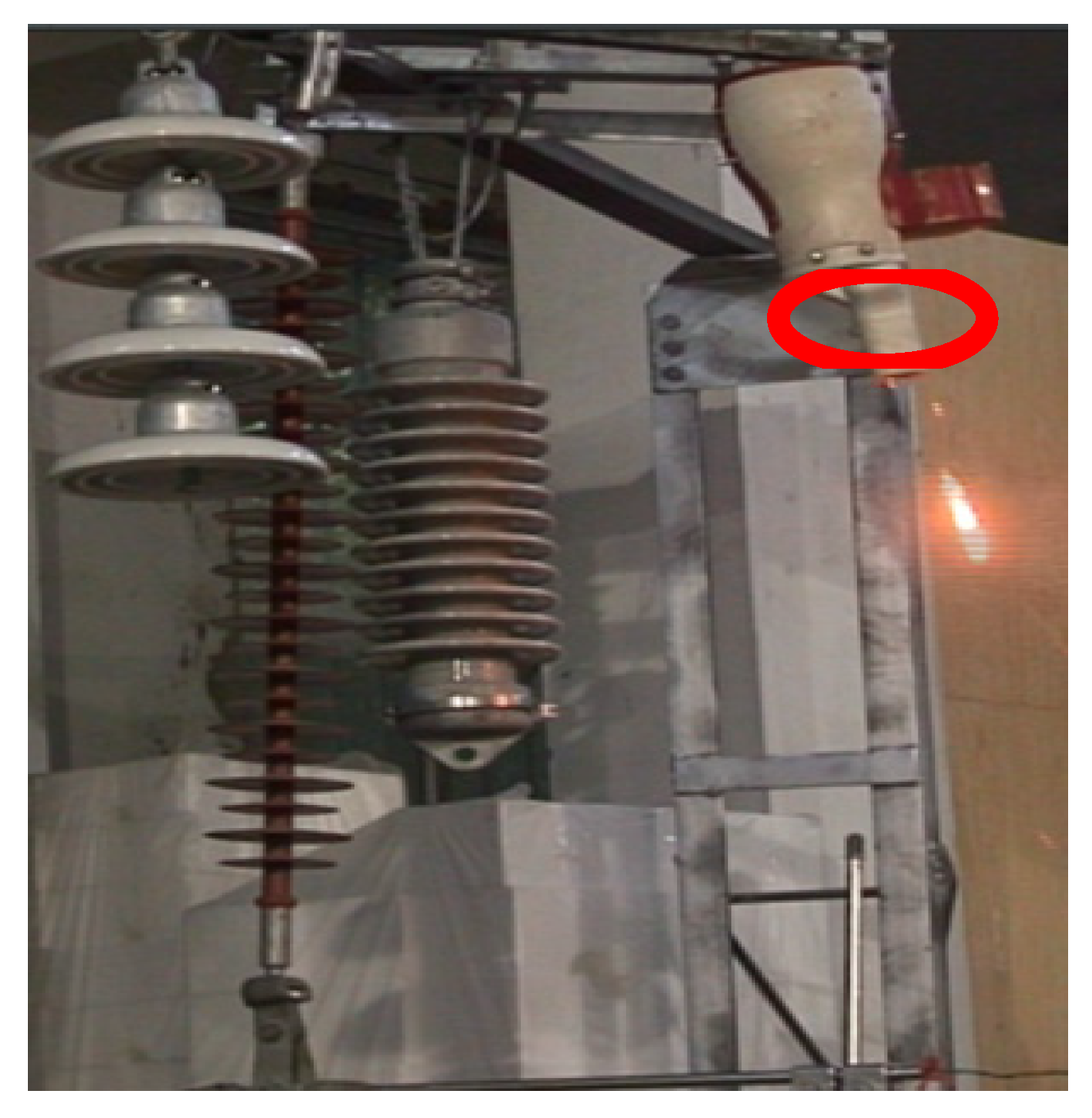

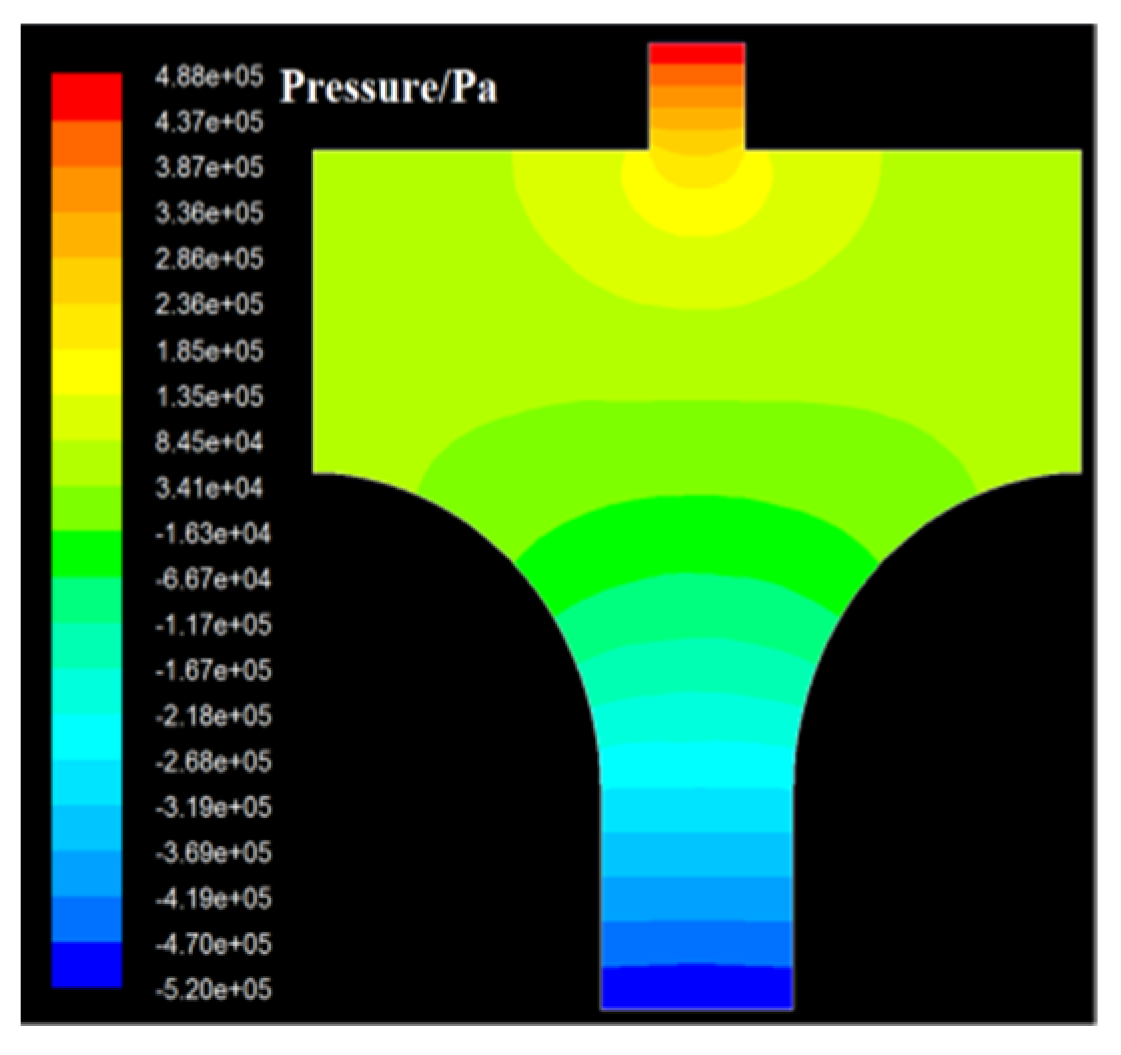
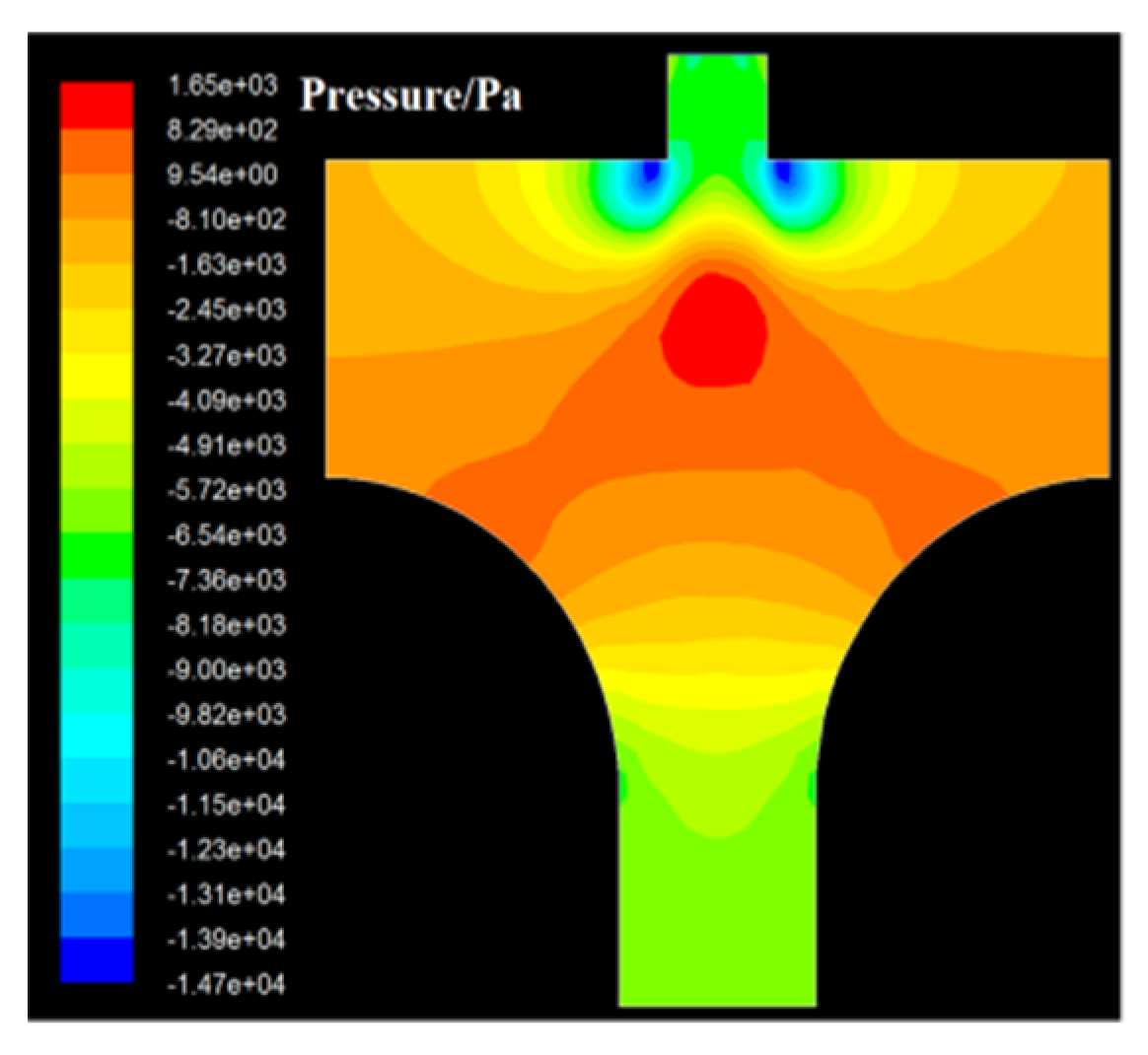
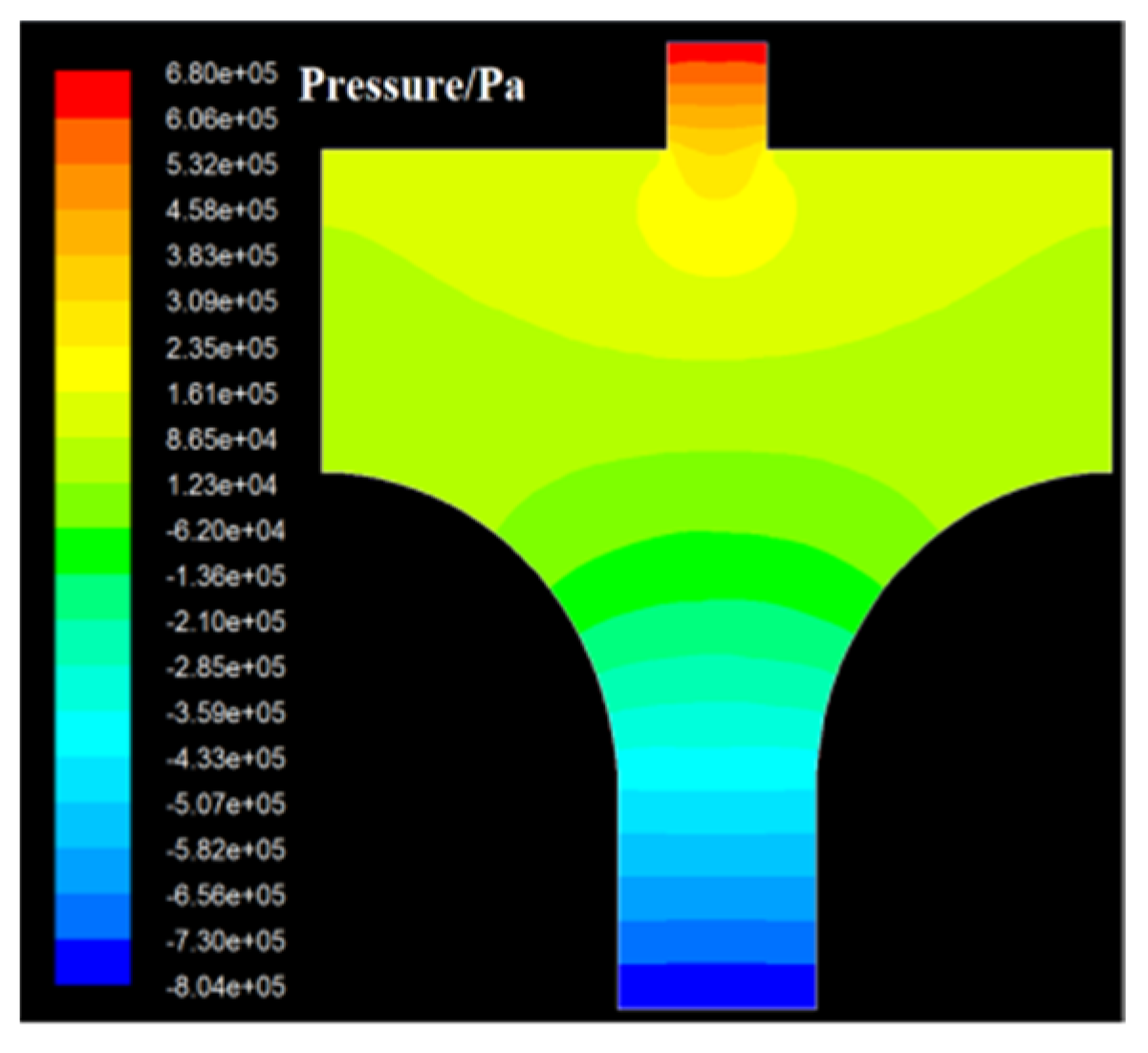
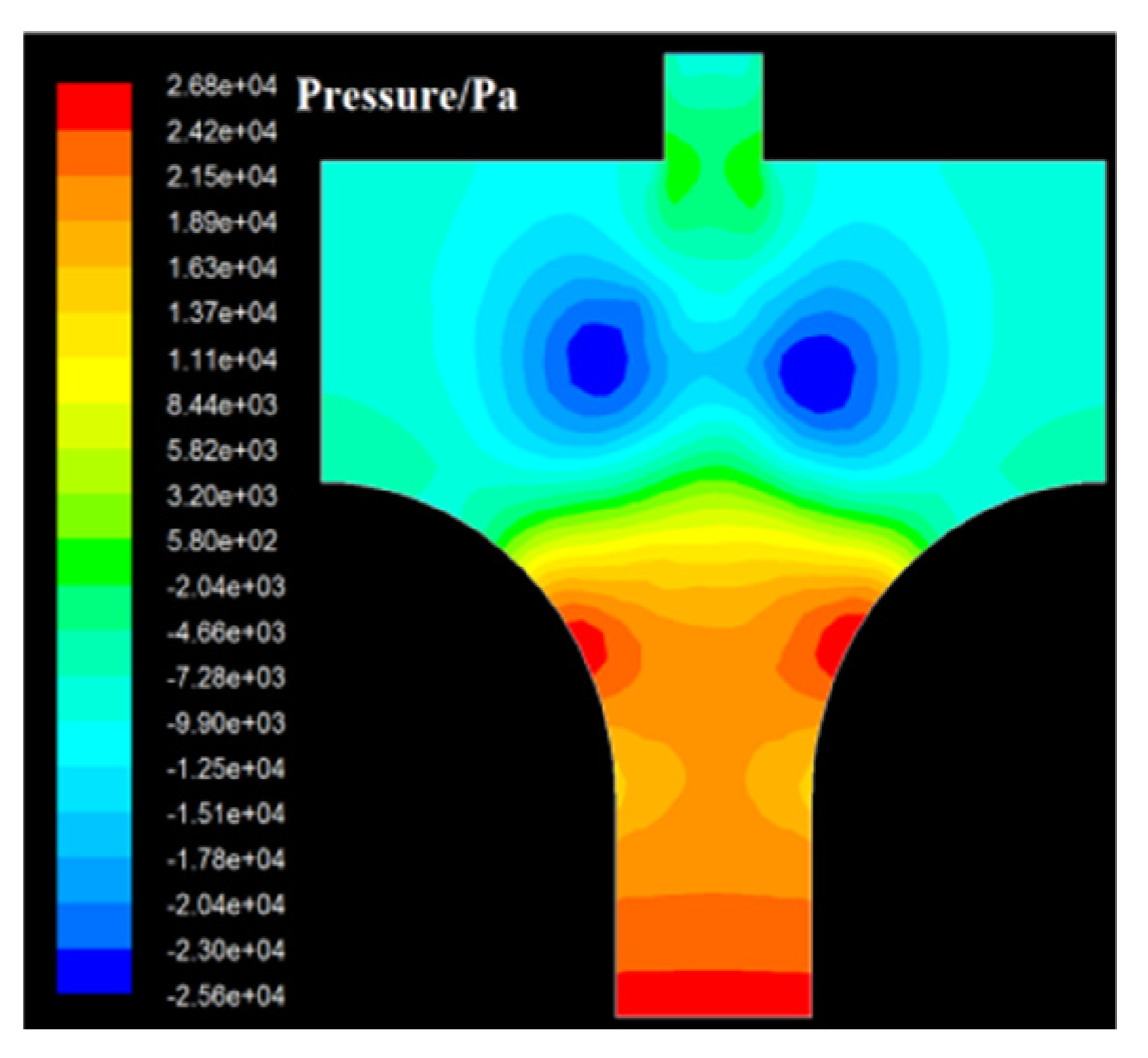
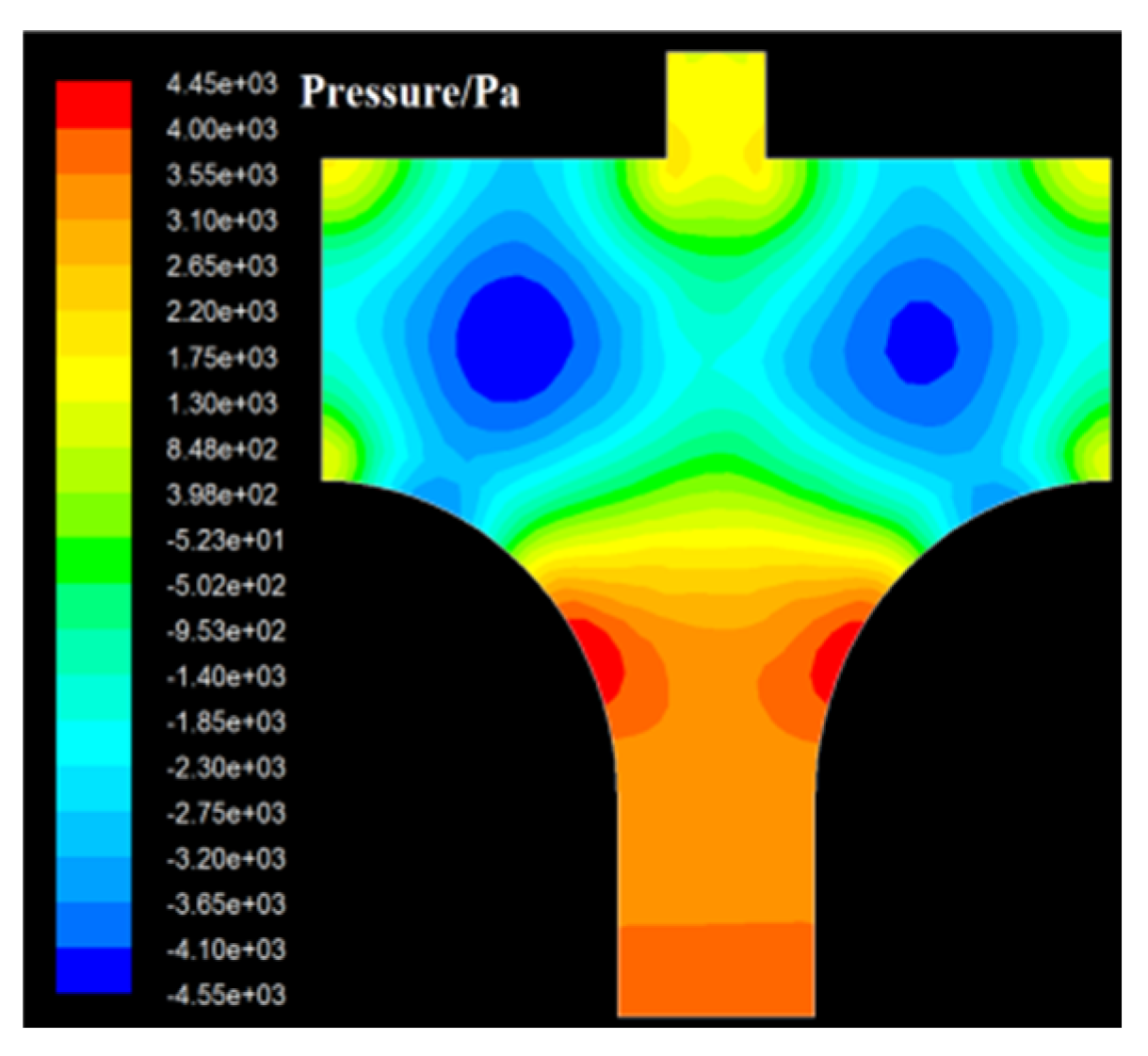

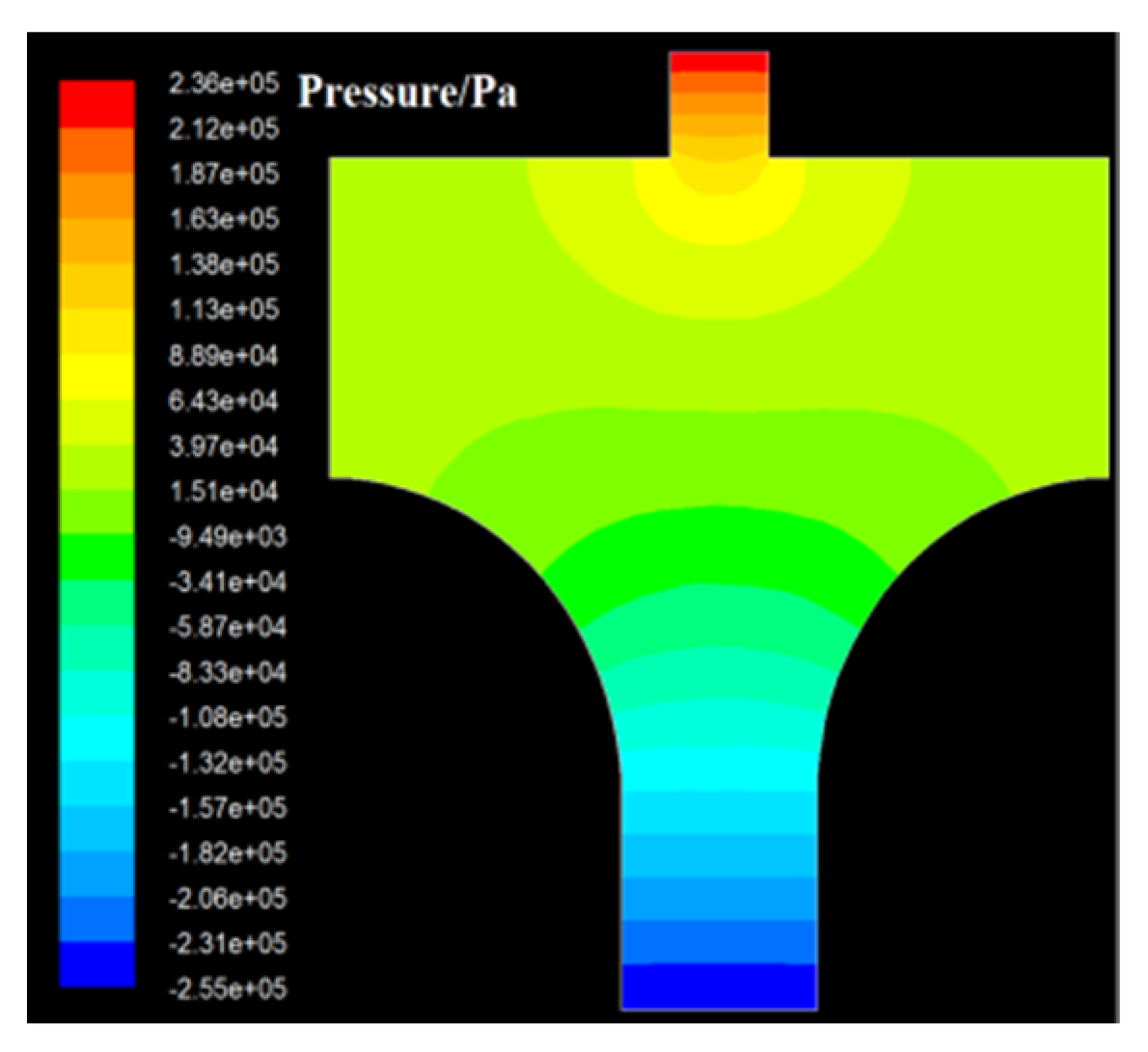

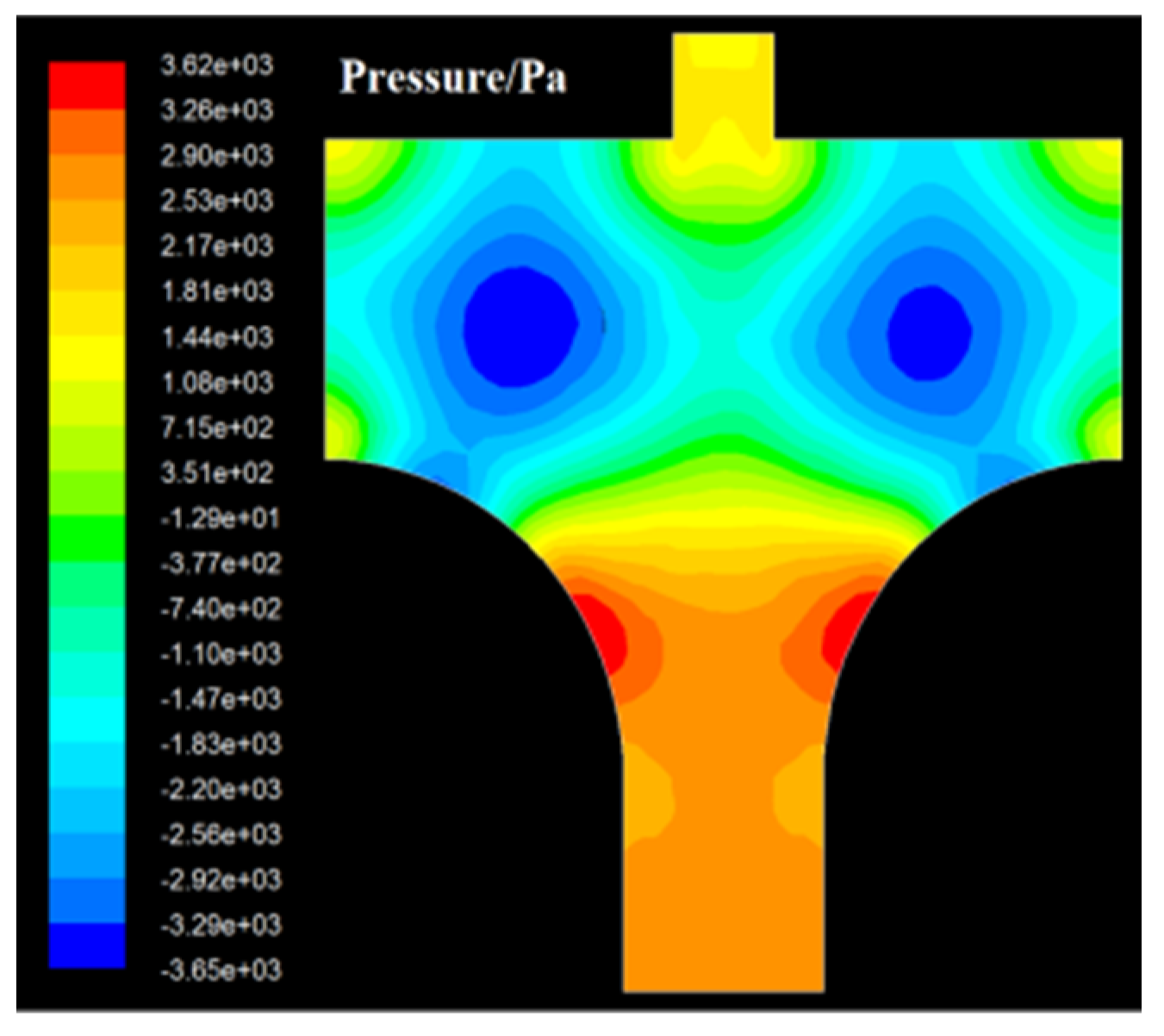
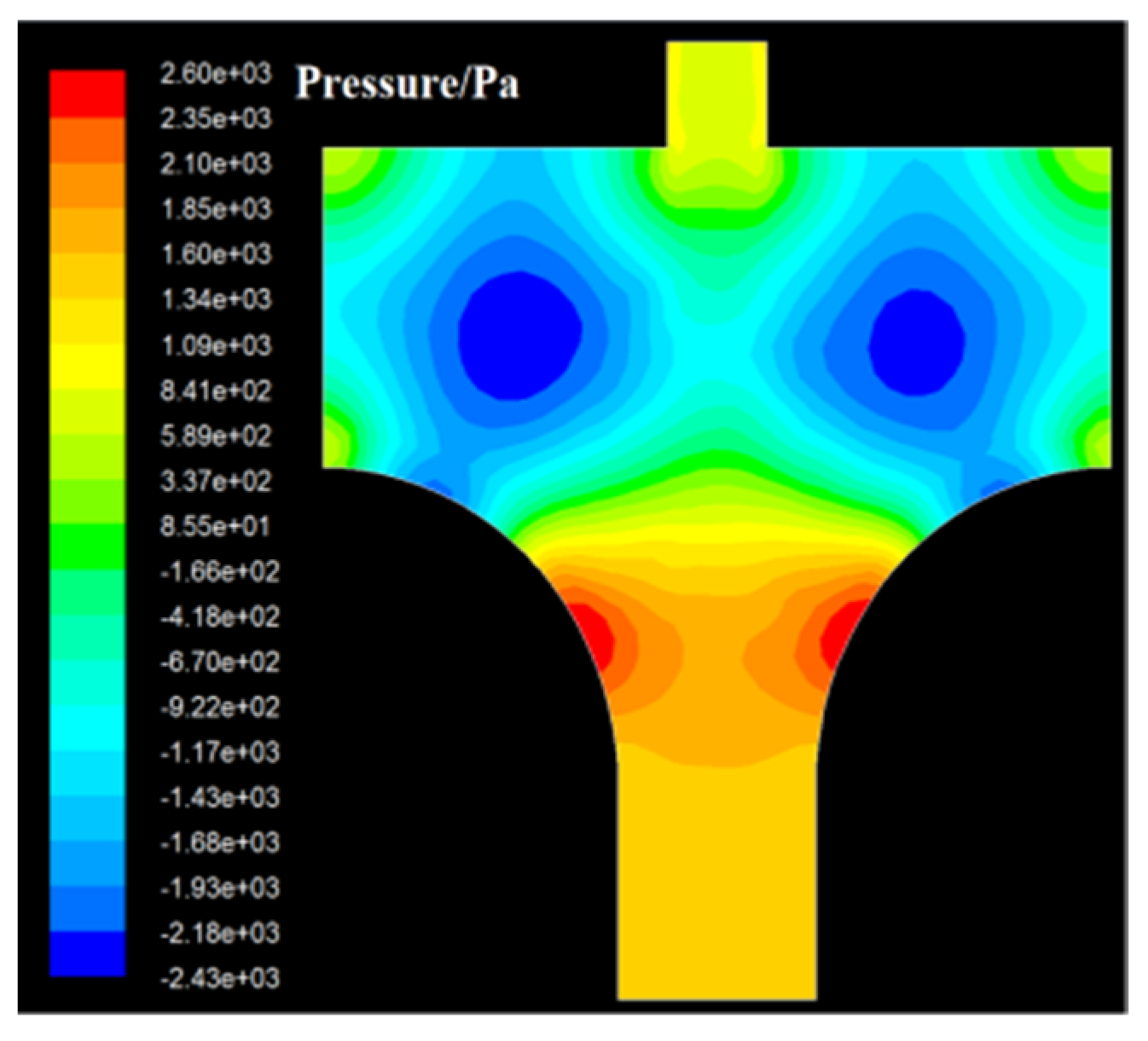

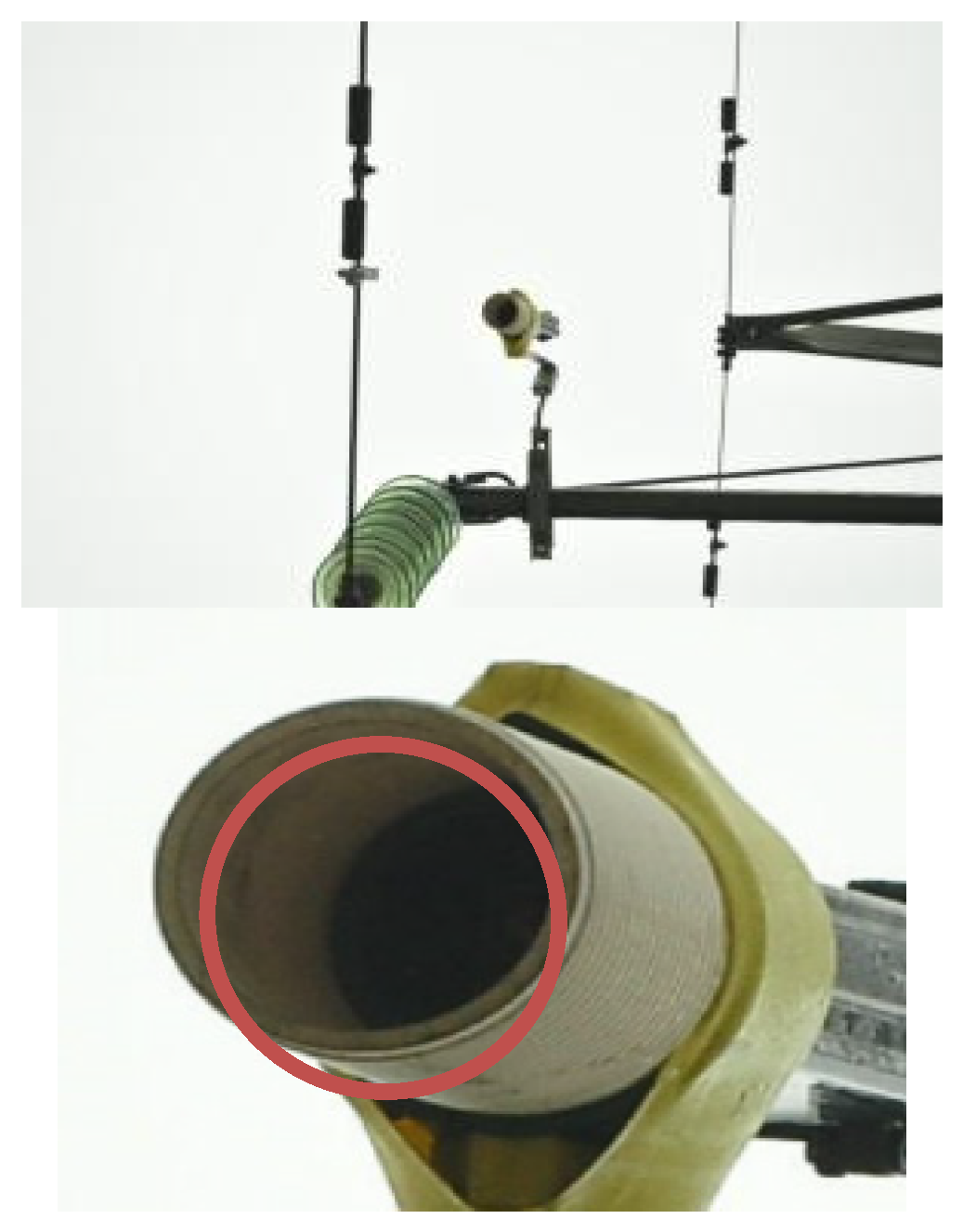

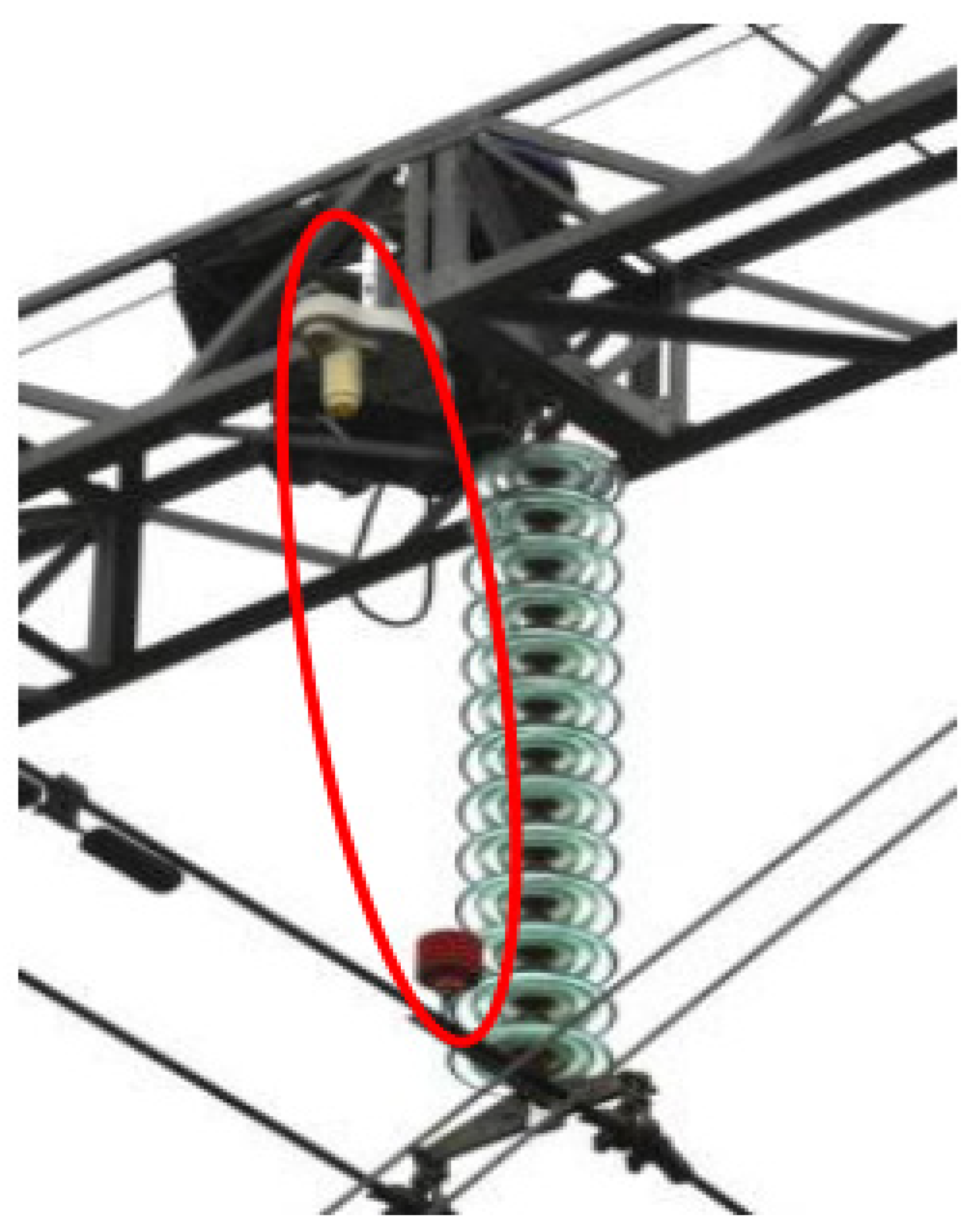


| System Voltage (kV) | 35 | 66 | 110 | 220 | 500 | 750 |
|---|---|---|---|---|---|---|
| Single-circuit line (kA) | 24~36 | 31~47 | 56~68 | 87~96 | 158~177 | 208~232 |
| Double-circuit transmission lines (kA) | —— | —— | 50~61 | 79~92 | 142~162 | 192~224 |
| Object Scope | 110 kV Line of Power Supply Bureau of a City, Guangxi Province, China | ||||
|---|---|---|---|---|---|
| Time Range | 11 June 2016 00:00:01~11 June 2016 03:00:00 | ||||
| Seq. No. | Time | Longitude | Latitude | Current (kA) | Tower Number |
| 1 | 11 June 2016 01:31:20.6833 | 109.422 | 21.5869 | −88.3 | 3 |
| 2 | 11 June 2016 01:37:15.1388 | 109.4788 | 21.5559 | −82.9 | 27~28 |
| 3 | 11 June 2016 01:38:22.5563 | 109.4765 | 21.5039 | −70.2 | 19~20 |
| 4 | 11 June 2016 01:39:01.2319 | 109.4775 | 21.5411 | −138.2 | 23~24 |
| 5 | 11 June 2016 01:39:33.5190 | 109.4569 | 21.5238 | −86.1 | 14 |
| Category | Traditional Lightning Protection Methods | Solid-Phase Gas Arc-Extinguishing Technology |
|---|---|---|
| Application situation | On all occasions | 110 kV, 220 kV, some 35 kV lines |
| Lightning protection concept | Traditional lightning protection concept. It is difficult to solve the problems of the first and subsequent strokes, strong lightning strikes, lightning shielding failure on lines, and the delay of the ZnO arrester valve plate. | Lightning flashover is allowed but power frequency arc construction is not allowed, and the lightning protection process of “lightning arc dredging–rapid arc-extinguishing–power frequency strong blocking” is completed. The open “field” structure with no ZnO valve plate delays the problem. Good protection against subsequent lightning strokes. Strong lightning strikes and lightning shielding failure on lines are also completely preventable. |
| Technical rationality | Lightning intensity, lightning resistance level, lightning mode, etc., are uncontrollable factors. | No uncontrollable factors. |
| Lightning protection effect | It is difficult to reach the standard; there is no protection against subsequent lightning strokes, and the lightning trip rate is high. | The arc-extinguishing time (within 3 ms) is less than the response time of the relay protection action, which solves the problem of protection against subsequent lightning strokes, and the lightning trip rate is reduced by more than 90%. |
| Investment cost | The grounding grid is huge and easy to corrode, requiring huge investment and renovation projects, and the arrester has many inherent defects, along with the threat of external damage, which requires continuous additional investment. | As long as the integrity of the grounding structure is ensured, resistance reduction is not required, which saves huge investment costs in the later period, reduces the required maintenance work, and reduces the cost by 70%. |
| Operation and maintenance | Continuous maintenance is required. | The solid-phase unit has no vulnerable parts and is maintenance-free for 5 years. |
| Category | Solid-Phase Gas Arc-Extinguishing Device (Figure 2) | Expansion Arc-Extinguishing Lightning Protection Device used in Russia (Figure 27) | Arc-Extinguishing Gap Lightning Protection Device used in Japan (Figure 26) |
|---|---|---|---|
| Structural characteristics | Open, all-air structure, “field” structure. | “Road” structure. | “Road” structure. |
| Arc-extinguishing mechanism | “Dredging–Extinguishing–Blocking” mode. Firstly, the lightning energy is channeled into the ground, and at the same time, the arc is extinguished by the strong jet gas induced by lightning, and the power frequency component is forcefully blocked. | Dredging–Extinguishing mode. First, the lightning arc is channeled, and after being baked by the initial power frequency arc, thermal expansion occurs, and finally the arc is extinguished by air flow. | Dredging–Extinguishing mode. After lightning strikes, gap flashover occurs, and the generated high-temperature power frequency arc bakes the inner wall of the pipeline, the gas-producing material on the inner wall produces a lot of gas, and finally the power frequency arc is cut off. |
| Action object | Power frequency continuous arc during initial fragile phase. | Power frequency arc in full development stage. | Power frequency arc in full development stage. |
| Arc-extinguishing difficulty | The arc is extinguished at the initial stage of formation of the power frequency continuous arc. Low arc-extinguishing difficulty coefficient. | The power frequency continuous arc has strong energy, and it is difficult to extinguish the arc. | It is difficult to extinguish the arc when the power frequency continuous arc is fully developed. |
| Arc-extinguishing time | Within about 3 ms (the power frequency arc is extinguished in the initial stage), less than the relay protection action response time, the circuit breaker trip can be avoided. | For extinguishing the arc in the fully developed period, the time required in most cases is longer than the response time of the relay protection action, and the circuit breaker can be easily tripped. | The arc-extinguishing time is longer than the response time of the relay protection action, and the circuit breaker can be easily tripped. |
| Arc-extinguishing effect | Excellent arc-extinguishing performance, limited arc-extinguishing times, but easy to replace. Effective protection against the first and subsequent strokes and other types of lightning strikes. Full-impact arc voltage. The residual voltage shows negative resistance. | In the initial stage of power frequency, arc development is slow, and gas production energy development lags behind arc energy development. The arc is weak, the gas production level is low, and the arc-extinguishing ability is not good. If the arc is strong and the gas production level is high, it can easily reignite, and this leads to a failure in arc-extinguishing. | The gas is produced by the organic gas-producing material on the inner wall of the pipeline, and the power frequency arc is extinguished. The gas-producing material can be easily lost and is difficult to replace, and the number of operations is limited, while the arc-extinguishing effect is not good. |
Disclaimer/Publisher’s Note: The statements, opinions and data contained in all publications are solely those of the individual author(s) and contributor(s) and not of MDPI and/or the editor(s). MDPI and/or the editor(s) disclaim responsibility for any injury to people or property resulting from any ideas, methods, instructions or products referred to in the content. |
© 2025 by the authors. Licensee MDPI, Basel, Switzerland. This article is an open access article distributed under the terms and conditions of the Creative Commons Attribution (CC BY) license (https://creativecommons.org/licenses/by/4.0/).
Share and Cite
Bi, J.; Wang, J. Study on the Causes and Countermeasures of High Lightning Trip-Out Rate on Electric Transmission Lines. Energies 2025, 18, 857. https://doi.org/10.3390/en18040857
Bi J, Wang J. Study on the Causes and Countermeasures of High Lightning Trip-Out Rate on Electric Transmission Lines. Energies. 2025; 18(4):857. https://doi.org/10.3390/en18040857
Chicago/Turabian StyleBi, Jieting, and Jufeng Wang. 2025. "Study on the Causes and Countermeasures of High Lightning Trip-Out Rate on Electric Transmission Lines" Energies 18, no. 4: 857. https://doi.org/10.3390/en18040857
APA StyleBi, J., & Wang, J. (2025). Study on the Causes and Countermeasures of High Lightning Trip-Out Rate on Electric Transmission Lines. Energies, 18(4), 857. https://doi.org/10.3390/en18040857





